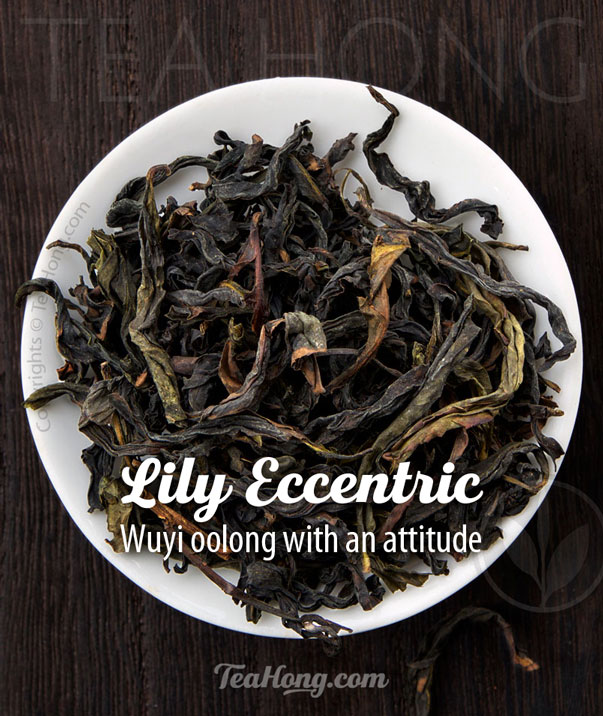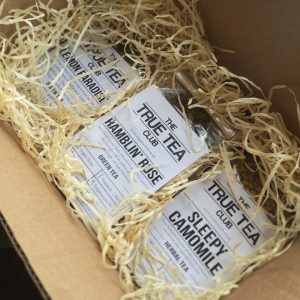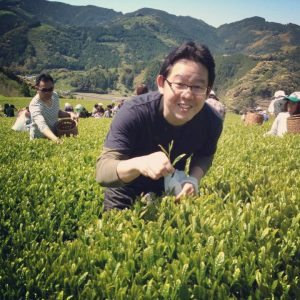Silver Needles, the First White Tea

Silver Needles, aka Baihao Yinzhen 白毫銀針 The oldest form of modern white tea made from the Dabai group of cultivars in Fuding, Fujian. 20057 | 8722
Baihao Yinzhen ( bái•háo yín•zhēn ) 白毫銀針, aka Silver Needles, White Hair Silver Needle, Pekoe Needles, Bak Ho Ngan Jum, and sometimes even cheap marketing names as Exotica Chinese White Tea, which some merchants use to label broken grade products of whatever origin.
origin: Fuding, Fujian
origin
When Baihao Yinzhen (White Downy Silver Needles) was first produced in late 18th century in Fuding, it was not such a large, beautifully downy leaf shoot like we have today. The cultivar used in those days yielded a product that was only half of the size of the present version and not as downy. It was only after the Fuding and Zhenghe Da’bai cultivars were successfully developed and put into production some 60 years later that the modern version of this large leaf “Pekoe” tea was born.
And for a good reason — the export price of the newer and bigger version was fetching 10 times the price of its predecessor, triggering a total change of plant in the tea farms so immediately as an effective capitalist society even in mid-19th century rural China. This modern version, since its conception, was largely meant for export for overseas Chinese, particularly those in Hong Kong and Southeast Asia.
For those who are interested in the social economy of tea, I’d like to point out that at the same time, The British Empire was beginning to successfully produce tea in India, and the Dutch in Indonesia, at lower prices. Going for finer, nicer tea, somehow, became a direction for growers in China. (more about tea social economy…)
Silver Needles vs Silver Needles
Because of the recent hype about white tea being a health drink most effective for anti-cancer, anti-aging, etc, there has been a surge in the demand for this tea. Many regions are producing it by transplanting the original tea cultivar from Fuding, for the extra downy tips. Most producers, however, do not know much about white tea processing. Green tea versions are much easier to produce and the products much brighter in colour for market appeal. Green “Silver Needles”, therefore, have become the majority of what the consumer gets when buying from an under-informed seller, however reputable the latter is, whatever the price.
- Silver Needle, aka Baihao Yinzhen 白毫銀針 The oldest form of white tea made from the Dabai group of cultivars in Fuding, Fujian. 20057 | 8722
- Silver Needle with a smaller shoot, probably not from the Fuding origin. Notice that this one is less oxidized than the authentic one. As a result, it is whiter and therefore more appealing to the under-informed consumer.
- Silver Needle, but not the authentic white tea. This variation is a green tea in nature. 綠茶版白毫銀針 20551 | 8839
- Wild tea maocha 野生毛茶, Laos, a white tea by nature and is collected by the Chinese as an ingredient for shengcha pu’er. Produced in a process close to the white tea process, this is also a lightly oxidized tea like white tea is. Produced from a cultivar of the assamica variety and is entirely different from the Dabai group.
- Tianshan Yinya 天山銀芽 a rare green tea from the Taimushan-Tianshan region in Eastern Fujian. 20554 | 8833
tasting notes
Fuding Da’bai, when used to produce a green tea, tastes lesser in length and pitch than other cultivars developed especially for green tea, for example Longjing#43 for Longjing or a Xingyang for smaller shoot varieties, such as Mengding Ganlu. The light oxidation of the white tea production process it is meant for giving the tea extra dimensions that make it worthy of its place. Between a nicer looking, whiter green tea version, and a less attractive, greyer white tea version, therefore, I really do not have to think twice to recommend the one with inner beauty.
More about the look. People in China infuse this tea in a water-glass. It is such a popular practice that one would think it the proper way of making this tea. It is not. They just do it for showing off the look of the finely pluck perfect shape leaf shoots. Or to tell people that they can afford a fine tea as such.
Use a proper teapot or a gaiwan, like any other fine tea. Except that with such a structurally intact leaf shoot tea, you have to wait longer for the infusion. Preheat the pot thoroughly and infuse using water at minimally 90°C.
Genuine and fine Silver Needles are fine as a standalone tea or as a companion for light seafood dishes. Lesser known to most people, a properly infused cup with ample strength shines with chocolate and chocolate desserts.
Maturing
Contrary to popular perception of white tea needs to be consumed when fresh, a genuine and top quality Silver Needle matures well. Not only does it get sweeter, but added aroma. Chocolate, in particular, in addition to floral notes hinting honey. The liquor even less herbaceous, and rounder, sweeter with a warmer tone.
This characteristic can be noticed in less than a year, and intensifies at three, providing proper storage and minimal disturbance.
health notes
Recent scientific findings suggest that white teas not only have more potent cancer-prevention effects than even very fine green teas on the human body (1), it may also be effective in promoting the metabolism of fat, thereby, reducing problems associated with obesity (2). That is why this relatively lesser-known tea category has been suddenly rising in demand.
This is one more reason for finding the right Silver Needles rather than the imitation.
I do not, however, particularly recommend the tea habit purely for the health benefits. I think personal liking of the experience should always come first. In any case, if you want to try this tea for health reasons, please do note that as in any other teas, the substances studied in whichever scientific report are only partial of the tea composition. There are still many substances in any one tea variety yet to be studied, or even known yet. As I write in the health section of this site, I shall discuss this from my personal experience both as an end-user and as a member of the trade who has been in contact with quite a number of customers.
Even though scientific reports suggest fine white teas such as Silver Needles has more health potency, when you use it, however, please remember that this tea has a TCM “cooling” nature. It cools (even when the tea temperature is hot) the bodily functions. Most significantly the respiratory and the digestive systems. If you have a cold, but no fever, but rather stickiness in the throat, or cold-itchy eyes, then you may have a “chilled” cold, (as opposite to “heated” cold) then this tea would be too “cool” for you. Taking it would further worsen your conditions. Even if you are about to have such a cold, the tea should be avoided too. And if your digestion system is on the “cold” side, as in easily upset after cold drinks or food, poor appetite because of poor digestion, or even easy gastric upset, then this tea is also not good for you. You need a tea which “cooling” nature is neutralized through heat during production and/or through fermentation. Such as traditional oolongs, black teas, post-fermented teas, or even a Zhenghe style White Peony. Matured versions are even safer.
On the other hand, if your bodily condition is on the “hot” side, (symptoms include hot lips, dry throat, constipation, hyper-activity, etc) Silver Needles maybe helpful to achieve a balance.
buying tips
Very often marketing puffs in the West brag about how this is the most expensive tea. Although the production volume is far lower than other popular teas, say Huangshan Maofeng, Baihao Yinzhen has never been really high price, not like such highly demanded better quality Longjing or Fenghuang Dancong, for example. Its epicurean status has never reached that of famous oolongs or fine green teas.
This makes it a very affordable option if it is suitable for you. However, if price is your consideration but you want the health benefits of a white tea, fine Bai Mudans are much better values. Their taste characters are not as subtle as Silver Needles, but are certainly fuller. Very often the best of these can be 40 to 50% less than a fine Silver Needles, at the wholesale. Retail situations differ dramatically amongst markets, though.
















You suggest steeping Silver Needle at atleast 194 degrees F. I always read different suggestions. Some say 185 is ideal. Some say anything over 190 will extract too much from the first steep and not leave enough for the re-steeps. Some even say 195 F will burn it. And then of course some suggest 195 F for 1:30 while others recommend 195 for 3-4 minutes. Can you please explain this to me because from one vendor to the the next, it’s all over the place in terms of steeping directions?
@Jerry
A lower temperature cannot reveal the true taste profile of genuine white teas, in particular Silver Needles. Longer infusion time does extract more from the leaves and render subsequent infusions less tasty.
However, if we look at tea as a beverage, it is logical to prepare a cup that is optimally tasty for what the tealeaves can offer. If a person takes only a little from the leaves to make a thin infusion so there are more cups to the gram, I wonder if s/he would add water to the wine so s/he gets more glasses from the same bottle.
In the case of Silver Needle, as in most other Mindong white teas, an optimum first infusion often extracts most of what the leaves can deliver. There are people who prefer thinner teas, or would like to believe that their tealeaves can last longer than other people’s, so they repeat infusion over and over.
There is also a myth saying that better teas last more rounds of infusion. In some cases, in particular larger leaves that are intensely twisted and curled, it is true when compared like to like. However, I do not see any physical logic behind it when applied universally.
As for why you see all sorts of saying going from one vendor to another, that really is something we cannot control, and that we would like to change. It’s a big job.